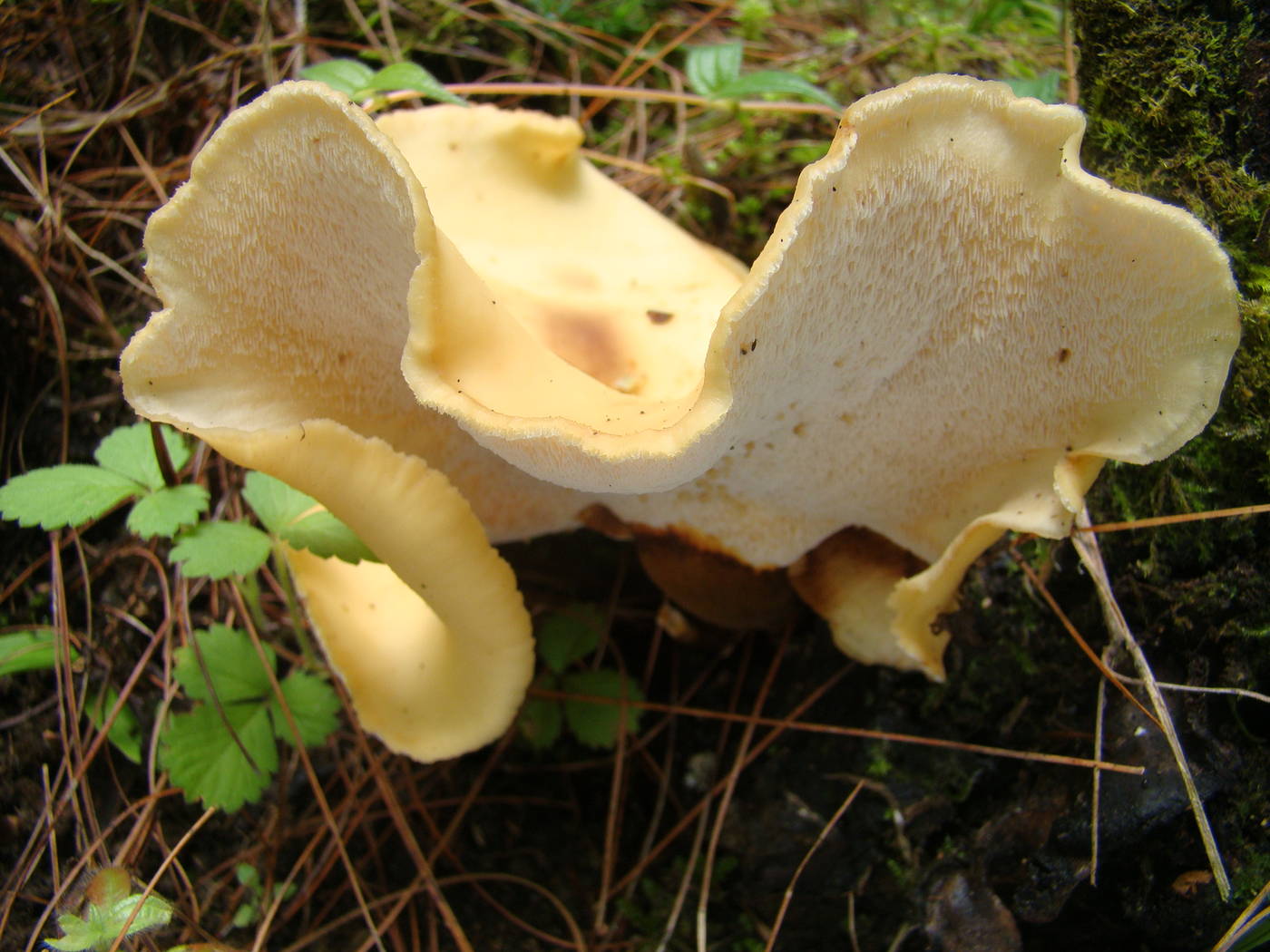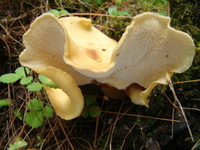
Local name: Kou Shamong
Edibility: Edible but very leathery even after cooking.
Habitat:Lignicolous and solitary.
Description: Cap: 5–10 cm across, irregularly kidney-shaped, depressed above the point of attachment to the stem, wavy and often lobed at the margin, ochre-brown with fine radial lines, brownish with age. Hymenophore: Decurrentpores which are white to cream coloured, 4–7 pores per mm, circular, white becoming ochraceous-brown. Stem: Up to 3 cm long, lateral or eccentric,equal, often curving, dry, smooth or finely velvety, pale tan at the apex but black below, tough. Flesh: White when fresh, drying corky and cream-coloured, tough and leathery. Spores Print: White.
Comments: Typically fruiting on smaller hardwood sticks and decaying branches, this polypore is easily recognized by its whitish pore surface, and its black, or half-black stem. It appears to vary somewhat in the colour and texture of its cap. Like many polypores it is rather tough, and can manage to "stay up" for quite a while in dry weather resultingin older specimens with faded, nearly white caps and brownish pore surfaces.



